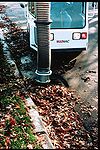
Difference between revisions of "Municipal pollution prevention methods"
m |
m |
||
| (3 intermediate revisions by the same user not shown) | |||
| Line 10: | Line 10: | ||
<tr> | <tr> | ||
<td>Temporary Construction Sediment Control</td> | <td>Temporary Construction Sediment Control</td> | ||
| − | <td> Implement and encourage practices to retain sediment within construction project area; see Temporary Construction Erosion and Sediment Control Factsheets for additional information</td> | + | <td> Implement and encourage practices to retain sediment within construction project area; see [[Temporary construction erosion and sediment control|Temporary Construction Erosion and Sediment Control Factsheets]] for additional information</td> |
<td>[[File:Temporary construction sediment control.jpg|center|100px]]</td> | <td>[[File:Temporary construction sediment control.jpg|center|100px]]</td> | ||
</tr> | </tr> | ||
| Line 79: | Line 79: | ||
<td>[[File:Staff employee volunteer education.jpg|center|100px]]</td> | <td>[[File:Staff employee volunteer education.jpg|center|100px]]</td> | ||
</tr> | </tr> | ||
| + | </table> | ||
| − | < | + | <noinclude> |
| − | [[ | + | [[Category:Level 3 - General information, reference, tables, images, and archives/Tables/Pollution prevention and source control]] |
| + | </noinclude> | ||
Latest revision as of 16:29, 3 August 2022
Municipal pollution prevention methods.
Link to this table
| Practice | Method | Image |
|---|---|---|
| Temporary Construction Sediment Control | Implement and encourage practices to retain sediment within construction project area; see Temporary Construction Erosion and Sediment Control Factsheets for additional information | |
| Wind Erosion Control | Institute a local program for wetting of open construction surfaces and other sources for windblown pollutants. | |
| Streambank Stabilization | Repair erosion occurring on a streambank of lakeshore in a timely manner; inspect bank areas for ice damage in the spring. | |
| Material Storage Control 1 | Reduce or eliminate spill and leakage loss by properly inspecting, containing, and storing hazardous materials and having a cleanup plan that can be quickly and efficiently implemented. | |
| Dumpster and Landfill Management | Ensure that contaminated material is contained to prevent solid and/or liquid waste from being washed into storm sewer systems or water bodies. | |
| Proper Pool Discharge 1 | Discharge pool water to sanitary sewer systems or hold for a week or more without the addition of chlorine prior to spreading over pervious areas instead of draining water directly to storm sewer systems. Follow local ordinances. | |
| Better Turf Management 1 | Ensure that mowing, fertilization, pesticide application, and irrigation are completed in ways that will prevent or reduce grass clippings, sediment, and chemicals from entering storm sewer systems; use native vegetation where possible. | |
| Better Street and Parking Lot Cleaning 1 | Maintain streets and parking lots frequently and especially in the spring by sweeping, picking up litter, and repairing deterioration; pressure wash pavement only as needed and avoid using cleaning agents. | |
| Better Street and Parking Lot Deicing | Properly store and conservatively apply salt, sand, or other deicing substances in order to prevent excessive and/or unnecessary contamination; implement anti-icing and prewet salt techniques for increased deicing efficiency. | |
| Proper Vehicle Management 1 | Ensure that vehicles are fueled, maintained, washed and stored in a manner that prevents the release of harmful fluids, including oil, antifreeze, gasoline, battery acid, hydraulic and transmission fluids, and cleaning solutions. | |
| Storm Sewer System Maintenance | Regularly clean debris from storm sewer inlets, remove sediment from catch basin sumps, and remove any illicit connections to storm sewer systems. | |
| Litter and Animal Waste Control 1 | Mandate litter and pet waste cleanup within the community and control waste-generating wildlife, such as geese; provide waste containers for litter and pet waste in public areas. | |
| Public Education | Label storm drains to indicate that no dumping is allowed and institute pollution prevention programs to educate and implement needed community practices. | |
| Staff, Employee, and Volunteer Education | Provide internal training for staff and provide direction to hired employees or volunteers regarding pollution prevention techniques to be used during work activites. |
This page was last edited on 3 August 2022, at 16:29.












